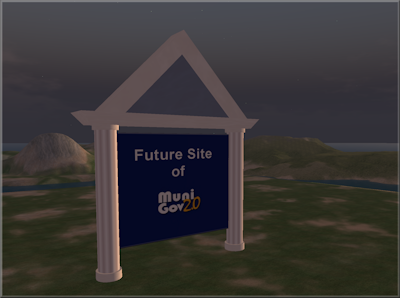We’ve been fortunate to have a group of federal employees from the US who are dedicated and passionate about government use of virtual worlds. The work accomplished by Eric Hackathorn (NOAA), William May and Lovisa Williams (State Dept), Charles White and Jeanne Holm (NASA), Paulette Robinson (NDU), and Douglas Maxwell and Tami Griffith (US Army) has been groundbreaking and inspirational. (And there are many more who I apologize for not listing.) Recently Maxwell launched a new project named MOSES. And based on what I’ve seen, this project has the potential to not only build upon these past accomplishments but also ramp up government use of virtual worlds and move us in new directions we have yet to discover.
At first, I thought MOSES was going to be a grid set up only for use by the military but with public access. Then last week, a post on the project site led me to believe MOSES was offering space on their grid to outside agencies/companies. The post talked about a map showing other groups establishing builds on the MOSES grid. While looking at the “Join MOSES” link on the project site, I found that yes, indeed, MOSES seemed to be offering space to other groups!
“MOSES is an Open Simulator based project designed for use by the military and our industry/academic collaborators. MOSES is currently an exploratory project designed to test multiple deployment methods of Open Simulator, archival methods for content, and experimental application case studies. Region owners retain full simulator rights, to include terraforming, OAR/IAR upload and download, and region restart access.“
To me, this seemed too good to be true! Our MuniGov group had started a grid – GovGrid – in February 2010 to start taking advantage of the benefits of OpenSim and provide space for others in government to explore the technology. But encouraging others to move onto the grid has been a challenge – the technology is still very new to most in government, and unfortunately because we host through a private provider, we have to charge for land. Also, although our group is managed by people working in government, it is not “owned” by a government agency. All of these factors can make it much more difficult to encourage participation by a local government. MOSES addresses most of these issues.
So I took a chance and asked Maxwell if our group could establish a presence on MOSES. He graciously offered a whole sim for MuniGov to set up a local government presence. We are temporarily located on the STTC_7_4 sim of MOSES and will now work on developing the site. MOSES is still considered an experimental effort, but because the grid allows users to back up their work, everything we do can be saved for use on any OpenSim grid. For now, we will retain GovGrid to allow for development of OAR files and other resources that can be shared in the OpenSim community.
It’s exciting that Maxwell has allowed our group to be part of this effort. Because of it, local government now has the opportunity to be part of the networking and collaboration provided by the US Army’s decision to allow non-military use of the grid. And we have the chance to be part of an incubator-type project destined to advance government use of virtual worlds. I would encourage anyone interested in government use of 3D immersive technology to sign up for an account on the MOSES site and become part of the MOSES experiment!
(You can read about more examples of government use of virtual worlds, including information about MiLands, at our sister site, Grid Works)





Awesome! How soon before virtual interaction becomes more mainstream, Pam? Feels like we’re still a few years out…plenty of time to build and prepare! 😉
I’ve always been worried I wouldn’t build my skills fast enough to keep up although it does seem like there is still some time as you suggest. But I’ve noticed over the last year a ramping up of its use. Still not close to mainstream, but a lot further than it was. And what’s encouraging is I am seeing it begin to show up in the engineering/planning field.